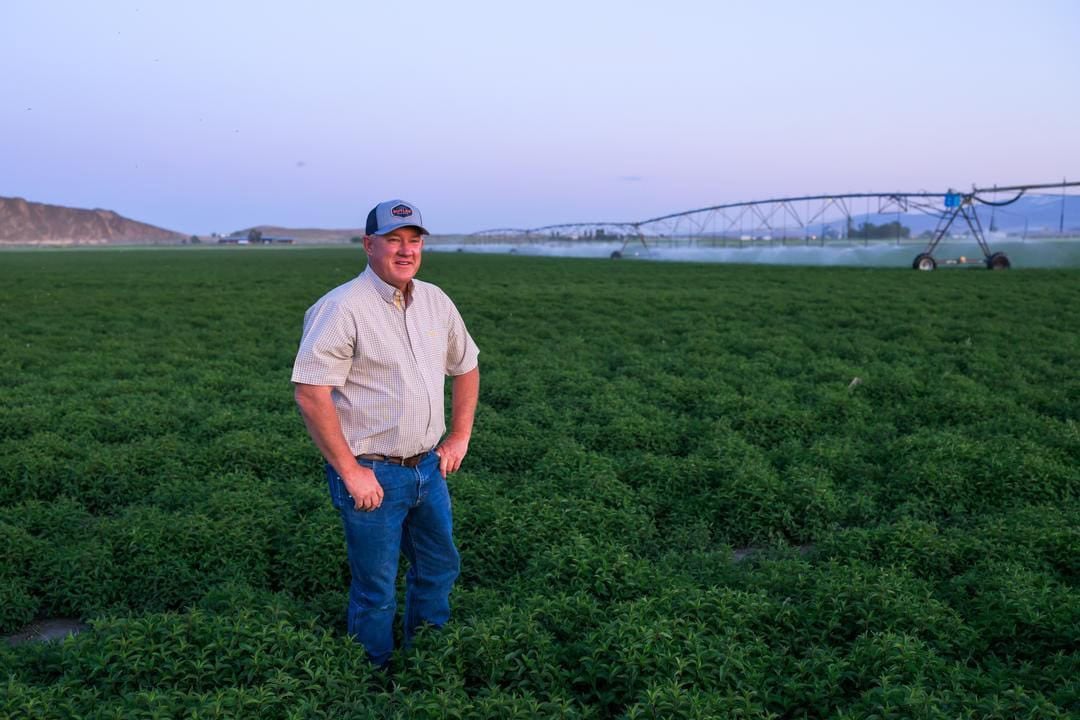Sustainability Looks Different at Seus Family Farms
The Seus Family has farmed in the Tule Lake Basin since 1947. As the sun sets on Seus Family Farms, it’s easy to see why four generations have staked their claim on these lands. To the south, looking out over the Tule Lake Wildlife Refuge, snow-covers the peak of Mount Shasta reflecting shades of pale pink and lavender. All around, verdant fields stretch in every direction, as far as the eye can see. Taking in the surroundings, it’s immediately apparent why local farmers are so devoted to sustainable farming. Sustainability protects and preserves this beautiful—and productive—land so it will be there for the next generation of Tulelake farmers and the wildlife they share the land with.
Picked out of a pickle jar
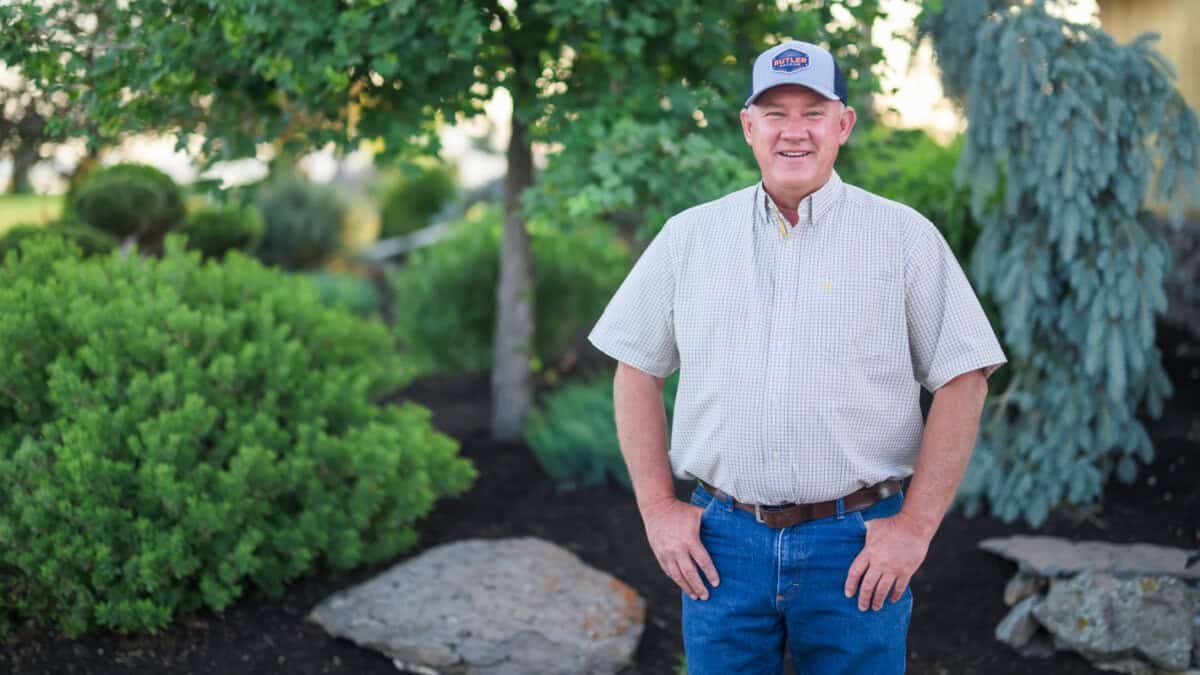
We met with Scott Seus, third-generation farmer and owner of Seus Family Farms. Scott’s primary crop is horseradish. The family also grows onions, garlic, cereal grains and alfalfa, along with peppermint and spearmint for tea.
When asked how the family came to farm in Tulelake, Scott cracks a mischievous smile. He states, “My grandfather’s name was picked out of a pickle jar. He walked to a map, put a pin on the map, and that became home for us.” Scott’s referring to the 1946 Tulelake Homestead Lottery. During this time, over 2000 military veterans entered a lottery for 86 available homesteads in the Klamath Basin. Obviously, his grandfather emerged victorious and was granted acreage that the family farms to this day.
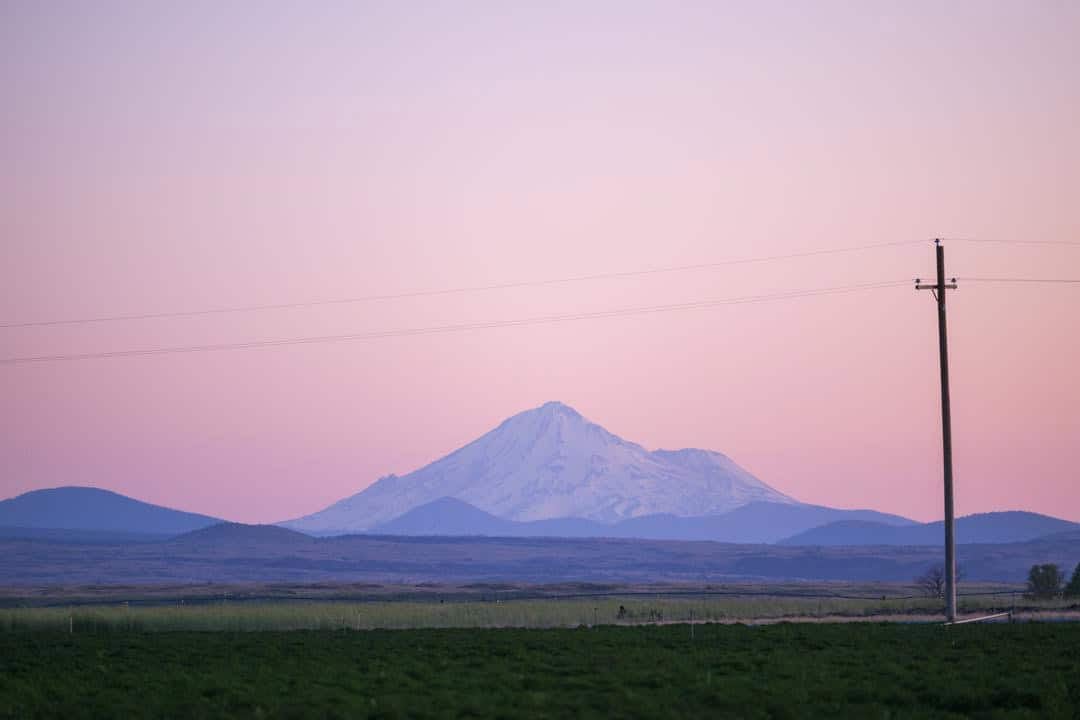
The Klamath Reclamation Project was part of the larger federal Newlands Reclamation Act, establishing irrigation to desert areas and draining swamps to “reclaim” the land for agriculture. In the Klamath Basin, reclaimed acreage was available to homesteaders through a series of lotteries. This includes the Tulelake Homestead Lottery, between 1917 and 1948.
High-elevation horseradish
Since 1947, Tulelake farmers have partnered with UC Davis to determine which crops will perform best in their unique – and sometimes challenging – growing environment. Scott elaborates, “University of California Davis came up here to find crops that would support and sustain the community. Tulelake is a great place to grow horseradish because we’re at 4,000 feet. We may hit highs in the 90s, but we have the ability to cool down at night. We go through cyclical weather patterns, and that tends to produce really good crops – potatoes, horseradish, mint and the other beautiful produce that we’re growing here.”

As with any crop, specific varieties of horseradish are better suited to Tulelake’s distinct terroir. Farmers know that choosing the best crops and varieties for each unique growing environment is a key part of sustainable agriculture. It means crops need less effort and input to thrive.
Scott states, “The horseradish that the university found best suited the farmers was brought here by Czechoslovakian homesteaders who settled a little town called Malin, Oregon, just to the north of us, about 15 miles. That’s still the variety that we grow predominantly today.”
Horseradish is the only crop that grows year-round at Seus Farms. The danger of frost and snow limits the growing season of onions, garlic, grains and herbs to roughly May through October.
Sustainable practices: same goals, different executions
While sustainable practices often share commonalities – conserving natural resources, protecting the environment, and enriching the community – they look different for every farm and every region within our state. Farming in Tulelake comes with a distinct set of challenges. Scott’s land is located within the boundaries of the Tule Lake Wildlife Refuge – one of only a few National Wildlife Refuges that allows farming.
Scott notes, “The deer, the antelope, the elk – all the different wildlife that lives here and surrounds us – are part of our farm. We take that responsibility very seriously.” He smirks and notes, “Part of the challenge is when that wildlife decides that your grain field’s a little better than the guy next door. We can try to chase them outta here, but if they’re gonna dine in your field – then that’s just what’s gonna happen.” Scott adopts a more serious expression and adds, “Deer are throughout our crops all the time. When we’re harvesting, we have to be cognizant of that. We are always on the lookout, always trying to haze that wildlife out of the way of harvest equipment.”
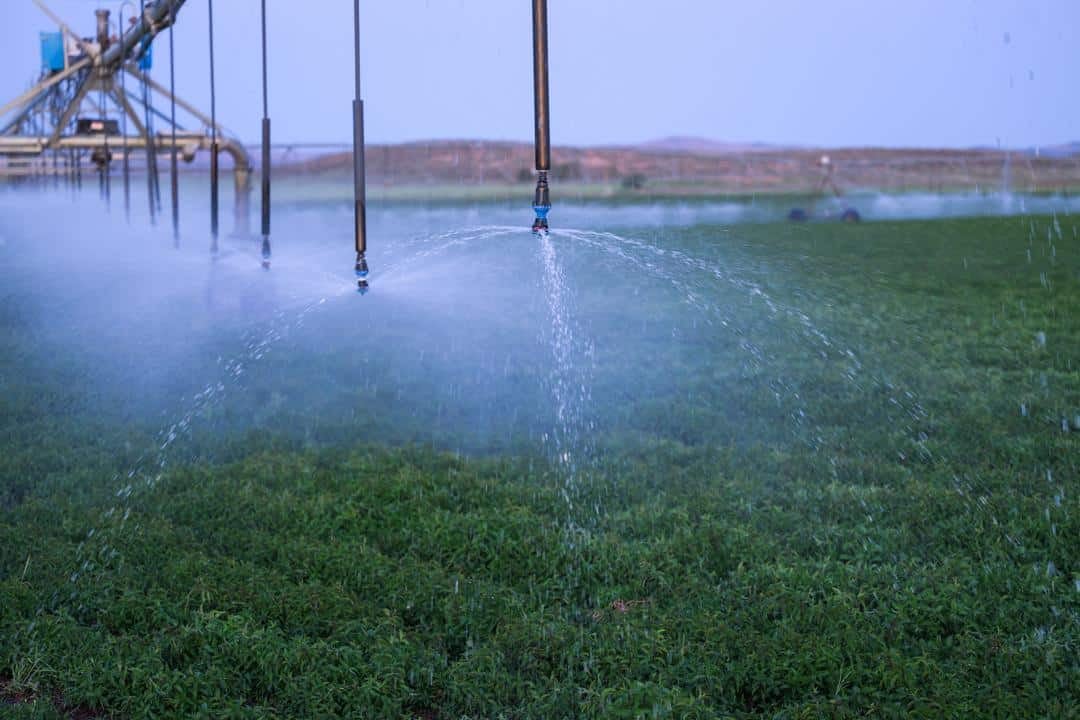
A different approach to water management
Water management also looks dramatically different in the Tule Lake Basin. Many California farmers rely on drip irrigation to deliver the exact amount of moisture necessary for each plant to thrive. Tulelake farms, however, sit upon an ancient lake bed, with 1200 feet of topsoil between the surface and the underlying volcanic crater. Farming in this specific soil demands a different approach. Scott explains, “Horseradish requires a fair amount of water. We apply that through pivots, through solid set irrigation. We can flood that crop – through deficit irrigation, we only hurt ourselves.” He continues, “This (the Tule Lake Basin) is a giant lake bed. The 1200 feet of top soil is duck manure and tule. It’s a giant bowl of jelly, which is why we have to keep the top part of that profile hydrated. Otherwise it starts cracking like a pond.”
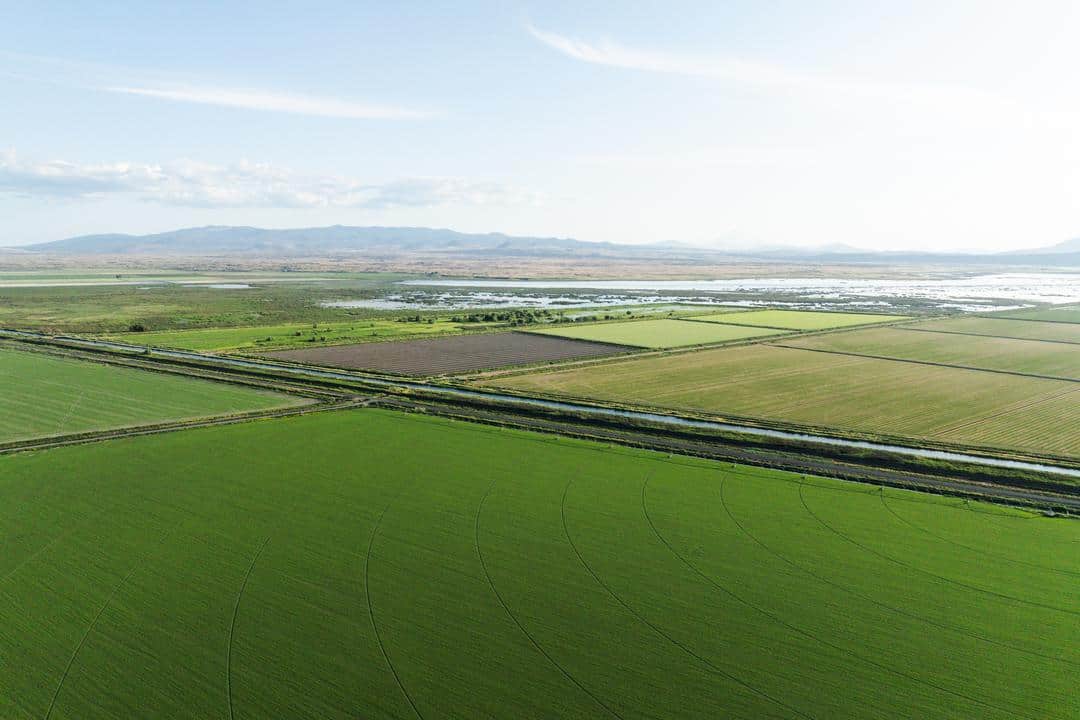
Scott, aware that flood irrigation is often maligned by the public, patiently elaborates, “The Klamath Reclamation Project is developed in a way that brings water from the top of the system down through it. Water is applied to a farmer’s field to the north of me.
Then, through a series of drain ditches, they recollect the water, pumping it up for the next farmer to use. So, the land is actually part of our sponge and part of our water supply here. By flood irrigating and moving those crops around, we’re actually sustaining the floor of our valley.” He pauses and then adds a final argument, “If we all went to deficit irrigating, we’d see cracks in the road and chimneys falling down.”
Organic farming is sustainable farming at Seus Family Farms
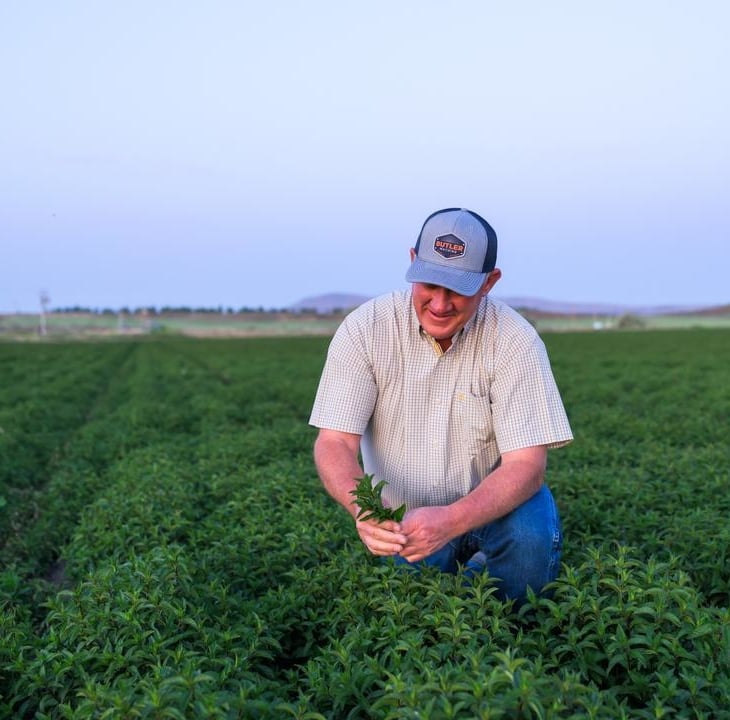
At Seus Family Farms, organic and sustainable farming go hand in hand. Organic farming makes sense because it allows a greater profit margin – making it an economically sustainable choice. However, Scott also believes that meeting the demand for organic food helps connect Seus Family Farms with consumers and the larger community.
He states, “We farm a portion of all of our crops organically. It’s a key part of our farm, for sure. Organic production’s important to us. Obviously, because of the revenues for the farm, but it’s also a part of telling our story. We’re not just growing a crop. We are trying to connect to consumers. We’re trying to be part of why somebody in Germany cares about why I am raising mint here. Those things are important – being sustainable as a farm and being able to have a product that we can offer to the world.”
A labor of love
Farming is never easy, but most things worth doing aren’t. We asked Scott what he loved most about his job. Without skipping a beat, he replied, “What I love most about farming is my surroundings. The backdrop of beautiful Mount Shasta, just to the south, there’s the Medicine Lake Highlands, and then overlooking the refuge – that’s something you don’t find everywhere. I love the fact that we get to start every year with new ideas and implement new things, from water management to machine ideas, to fertility, to new varieties. We get to try something a little bit different every year.”
Scott continues, “They say that you get 40 crops as a farmer. I’m getting up there in my crops – and I still haven’t got it all figured out – but I’m still excited every spring to try something new. Scott grins, and concludes, “I’m proud to say I’m third generation and raising the fourth generation, and hopefully this is something that’ll sustain itself into the future.”
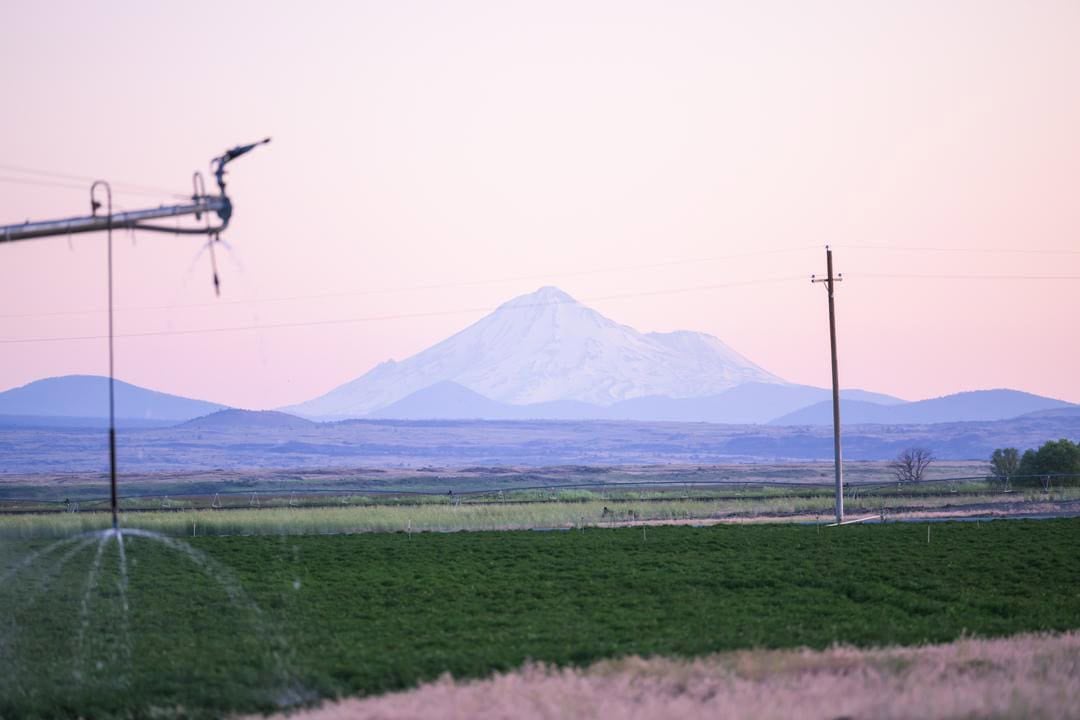
Want to learn more about what grows in Far Northern California?

